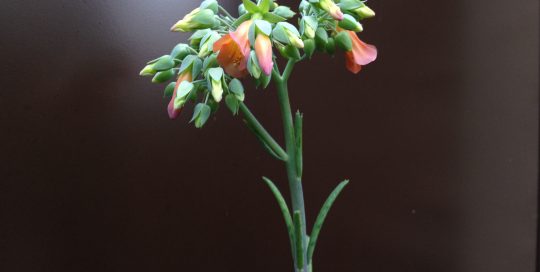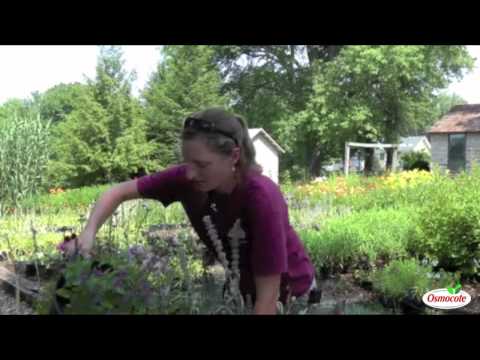The Black Bat Plant
Views: 6363

I spotted this unusual plant while shopping at a local nursery and was immediately intrigued. Well, actually I walked past this plant a couple of times. It was sitting on the ground by the greenhouse wall. I didn’t notice until the flower brushed against my bare leg and I stopped to look down to make sure there wasn’t a giant bug on me. There wasn’t, but I was startled to see the unusual looking flower of the Black Bat Plant.
Black Bat Plants
These exotic looking flowers aren’t common in Indiana, so I immediately whipped out my phone to take a few pictures.
Leaves of the Black Bat Plant (or Tacca chantrieri) are upright, green and glossy, but unremarkable. It’s the unusual flower that is the star.
Flowers are purplish brown blooms in the center while the bracts form what look like bat wings. The long, whisker-like structures are bracteoles, which are a sort of recent evolutionary development thought to help Bat Plants reproduce in the absence of pollinators. This is interesting because it could indicate that plants may be adapting to reproduce without the aid of insects as pollinators, since many insect populations are declining in number.
Though they’re incredible looking, the flowers of the Black Bat Plant are best left on the plant. They quickly decline when cut. There are other species available, including the White Bat Plant which has showy white bracts. Blooms usually appear in late summer through fall, which is when this plant is more likely to be for sale at nurseries and floral shops.
The Black Bat Plant is native to southern Asia and certainly wouldn’t survive in my Indiana garden with clay soil and harsh winters. But I might have a shot growing it in a container as a houseplant.
Growing Black Bat Plants in Containers
Bat Plants like containers that are wider than they are deep, with a loose soil mix composed mostly of bark, peat moss, and a little sand.
Consistent soil moisture and humidity are important for success with this plant. If grown outside of tropical climates or humid greenhouse conditions, use pebble trays and regularly mist the leaves.
Bright, indirect light is best if grown indoors, while shade is preferred outside. And good air circulation is beneficial for healthy Bat plants, indoors or out.
Meet Abbi Hayes
Abbi's Recent Posts

Kalanchoe delagoensis: Mother of Millions







